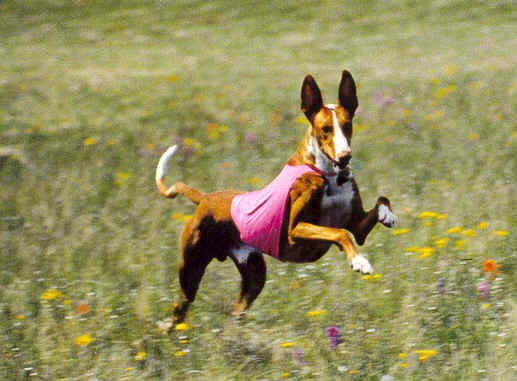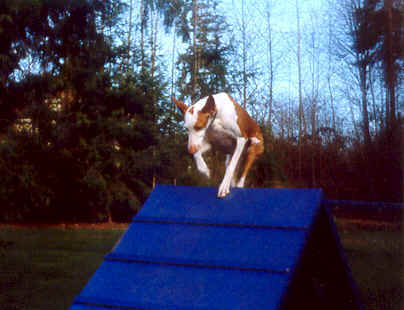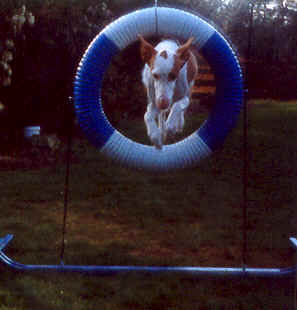|
|
|
 |
The Canine Sports Scene |
Photo by Leaping Lizard |
Canine sports can be divided into two categories: activities using the dog's instincts (working independently of a handler) and activities requiring extensive training (working with a handler).
|
||
|
|
||
| Independent activities popular in
the United States include Open Field Coursing (OFC) and lure coursing. These rely on the
strong hunting instincts instilled in hounds over thousands of years, and can produce
interesting results. It is possible for a dog to excel in OFC, yet refuse to follow the
plastic bag on a lure course, and the reverse is also true. It is important to remember
that simulated hunts are not reliable indicators of true hunting
instincts and abilities. This raises excellent discussion among breeders and fanciers.
Does one preserve the breed exactly as it has been for so long, or allow it to change and
adapt to our current desires? OFC most closely resembles the traditional Ibizan hunt, where hares are flushed and hunted, and points are assigned to the dog on such elements as speed, enthusiasm, agility, endurance, and contact with the prey. There are few places in the United States where this kind of hunt is legal, and it takes a special kind of devoted owner to endure the rigors of hunting on foot, knowing the possibility that no game will be found all day.
|
||
|
||
| These hunting/chasing sports do
not require extensive training, but rely on instincts carefully maintained in the breed.
They are the most popular activities for most hound fanciers.
|
||
 |
Teamwork: The Dog and Handler Connection |
|
|
|
|
 |
 |
|
The fastest-growing canine sports in the
United States are those involving close teamwork between dog and handler. Here is a very
brief summary of some of the most popular sports, and their descriptions:
|
Home |
Introduction |
Breed Standards |
Living with an Ibizan Hound |
What's So Special |
Sports Training |
Breeders' Ethics |
Find a Good Breeder |